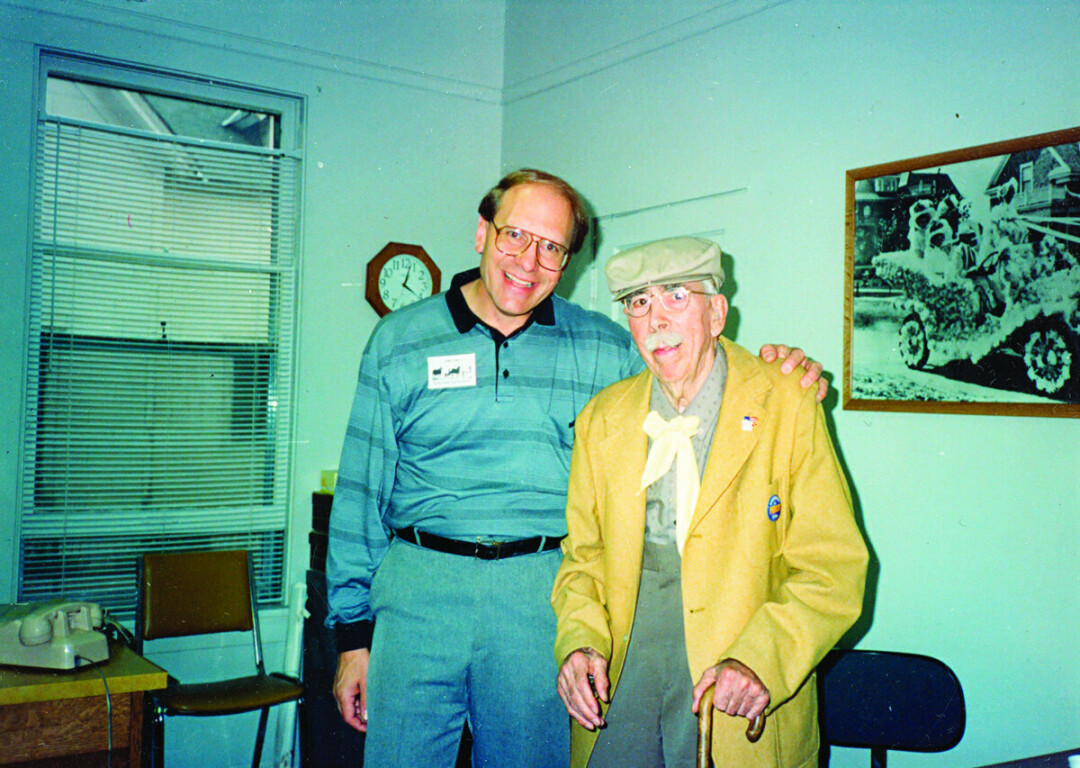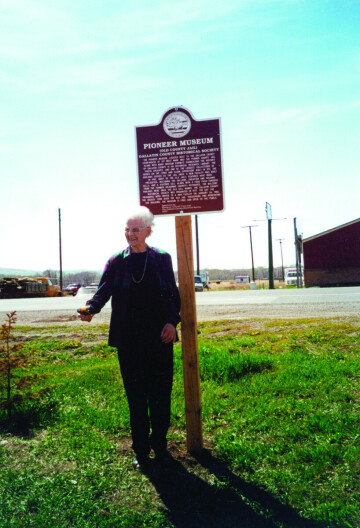Heart & Soul: The People of the Gallatin Historical Society
Rachel Phillips | Monday Jan. 1st, 2024
Forty-six years ago, the Gallatin County Historical Society was founded to preserve and share the history of our corner of Montana. Known as the Gallatin History Museum today, and located in the former county jail building on Main Street, the organization still works to fulfill the Gallatin Historical Society’s mission to “preserve, promote and foster the history of Gallatin County and southwest Montana.” Through the years, many talented people have made this mission possible. Here are just a few of their stories.
Esther Nelson
In a 2017 interview, Esther Nelson recalled when Gallatin County was interested in removing the old jail building so the space could be used for a parking lot. Esther and the other Gallatin Historical Society founders were faced with the task of convincing the county that the building was worth saving. She remembered walking up and down Main Street, drumming up support for a county historical society and asking for donations. Despite the incredible amount of hard work, Esther stated: “We believed in it and had a lot of support. People were glad to see something worthwhile happening to the building.” Many hands transformed the old jail into a museum. Giant scaffolds filled the Main Hall so volunteers could paint and clean windows. Esther purchased new carpeting for the building and, along with her crew, built planter beds outside the Museum to hold flowers.
Once the Gallatin Historical Society was up and running, locals and travelers alike poked their heads in the door, just to see what the museum was all about. Esther remembered the day when a man stopped in on a whim as he and his wife were passing through town. He inquired after his family history in the area and was pleasantly surprised with the information available. According to Esther, he ran out to the car where his wife was waiting and told her they needed to get a hotel room -- ”they were staying.” Esther gave tours of the museum to local children, and they got the chance to “be locked up” (just as they still do today). Following one such tour, Esther received a thank-you note from a little boy who assured her that “he’d always be good.”
Esther Nelson started her work at the Gallatin Historical Society after a 35-year career with the Bozeman School District. She served as treasurer of the society for over twenty years. Reminiscing about her work at GHS, she said; “We believed in what we were doing and had a lot of support from the community.”

Dennis Seibel
In 1991, Bozeman native Dennis Seibel took over as the Gallatin Historical Society’s first salaried Executive Director. On accepting the position, he noted; “It is indeed an honor and responsibility to fill the position as the Society’s first director. The GCHS [Gallatin County Historical Society] has become a model to other historical societies throughout the state. People, of course, have made the difference. The energy and enthusiasm of the membership since the beginning in 1977 have created a truly remarkable facility with truly remarkable history.”
Seibel was born in Bozeman in 1947 and attended Bozeman Senior High School, where he excelled in sports and acting. He earned degrees in Chemical Engineering and History from Montana State University and began his professional career working for chemical companies in New York, Boston, and Billings, Montana. Dennis was well-known for his portrayals of Mark Twain and Norman Rockwell, as well as his talents for singing, producing documentaries, and writing. He authored a pamphlet titled Fort Ellis, Montana Territory, 1867-1886, that remains a go-to history source today. In 1997, Dennis Seibel accepted a position as Executive Director of the Georgetown Energy Museum in Colorado, and later worked as an instructor and advisor at the SW Colorado Community College. He passed away in Cortez, Colorado in 2013.
Dr. Merrill Burlingame
Affectionately called “Mr. Montana History,” Dr. Merrill Burlingame probably knew more about the subject than anyone else before or since. Originally from Iowa, Burlingame came to teach history at Montana State College in 1929. The ever-humble professor spent decades writing, collecting, and storing Montana’s history. In 1941, Burlingame’s decade of research on John Bozeman culminated with his publication of a short biography, John M. Bozeman, Montana Trailmaker. Before his death in 1994, Burlingame authored dozens of articles and books on Montana history, and his guidance was instrumental in the creation of both the Gallatin History Museum, and the Museum of the Rockies (formerly the McGill Museum).
Wilbur Spring
Born in 1921 on his family’s farm north of Belgrade, Wilbur Spring knew just about everything there was to know about Gallatin County and Belgrade history. In his youth, he was active in Future Farmers of America (serving as the Belgrade Chapter’s first president) and worked alongside his father on the family farm. He also served on the Belgrade School Board for sixteen years, and spent three terms representing Gallatin County in Montana’s House of Representatives, from 1989 to 1994. Wilbur volunteered at the museum as a tour guide and delighted visitors, other volunteers, and staff alike with his amazing and often hilarious tales of growing up in the Gallatin Valley. He enjoyed locking up visitors in the museum’s functioning jail cell, sometimes locking himself in right along with them. Fortunately, some of Wilbur’s historical knowledge and stories have been preserved in recordings created by museum Executive Director John Russell in 2006 and they will forever remain a treasured part of the museum’s oral history collection. In 2013, Wilbur passed away at age 92.
Glenn and Ruth Welch
Glenn and Ruth Welch met each other at a church group in 1964. A shoe salesman from Chambers-Fisher Department Store with a knack for baking cakes, Glenn grew up in Bozeman’s blue-collar Northside neighborhood. Ruth Poetter was a pharmacist like her father, E.J. Poetter, who owned a drugstore on Main Street next to Miller’s Jewelry for nearly forty years. After retiring from their respective careers, the couple focused on a shared passion: collecting antiques. The Welch’s early 1900s-era family home was filled with antiques of all kinds, from toys to china to pharmaceutical equipment, which Glenn laughingly called their “junque” (spelled with a “que” to lend their collection an air of sophistication). Glenn and Ruth volunteered weekly at the Gallatin History Museum from 1993 to 2016, and Glenn served on the Gallatin Historical Society Board of Directors from 1996 to 2005. To the delight of staff and volunteers, Glenn and Ruth frequently brought small items from the “Welch Museum” for special “show and tell” sessions during their regular volunteer shift on Wednesday afternoons.

Grace Bates
On September 8, 1982, Grace Bates noted in her Historical Society journal that she had spent the day with Lawrence Christie, a fellow volunteer and Gallatin Historical Society founder, spraying down the entire jail building’s interior with a rented power water washer. She wrote; “Hopefully, we have the first layer of dirt off!” Grace was determined to accomplish more than just remove grime from jail cells -- she wanted to create a Museum. Amsterdam, Montana native Grace Kamp Bates was one of the original founders of the Gallatin Historical Society in 1977, served as President of its Board of Directors for twelve years, organized a Lewis and Clark Pageant in the early 1980s, and built displays at the museum. She helped create and install forty-five historic signs throughout Gallatin County, and wrote the area’s much-used encyclopedic reference guide, Gallatin County Places & Things, Present & Past. An original Gallatin Historical Society “force of nature,” Grace retired from the Board in 1992. She passed away in 2012 at age 95.
A heartfelt thank you to all past and present Gallatin Historical Society members, donors, supporters, volunteers, staff, and board members—for your dedication to preserving and sharing our area’s history. Here’s to a new year and many more exciting history-filled years to come!
| Tweet |
